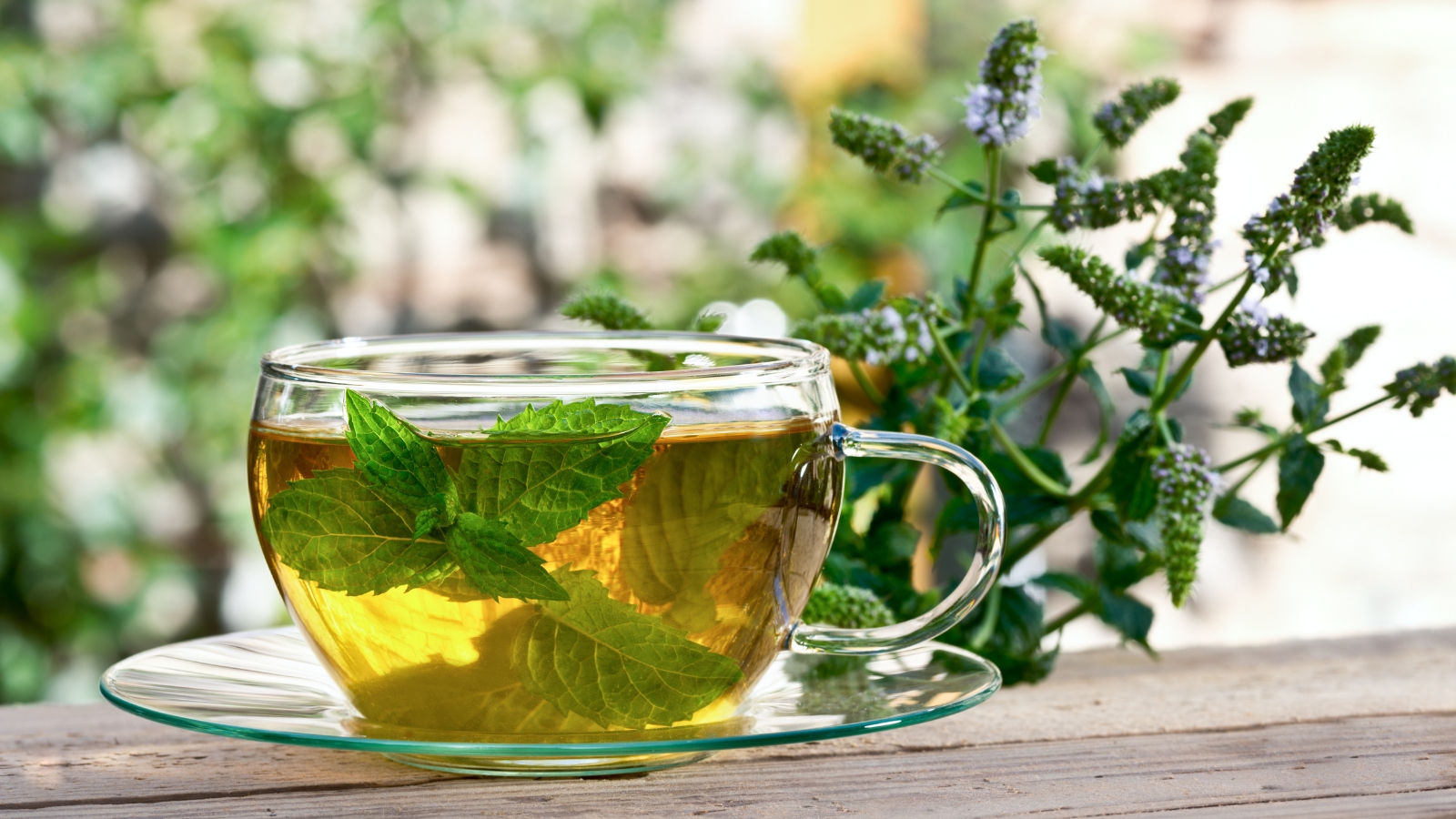9 Surprising Health Benefits of Mint
Looking for natural relief for allergies, headaches, nausea, or other health conditions? Mint is here to help. Kevin Espiritu explains nine health benefits of mint, backed by science.

Contents
Mint is one of the most useful herbs you can grow in your garden, whether in beds or containers indoors. It’s great in savory or sweet dishes and has a refreshing quality that few other herbs add.
Along with its usefulness in the kitchen, mint also has several health benefits. These mint health benefits are backed by scientists and several studies, giving you even more reason to keep mint in your garden.
Alleviate Allergies

Millions of people suffer from allergies worldwide, causing a long list of frustrating symptoms like congestion, itching, and trouble breathing. While several medications exist to treat these symptoms, long-term use can result in reduced effectiveness or negative side effects. Luckily, mild allergy sufferers searching for other remedies can look to the mint family.
Studies have found that plants in the mint family (Lamiaceae) have anti-allergic bioactivity, offering some relief from certain allergens. Mint also contains a compound called rosmarinic acid that helps to reduce inflammation, improving those pesky allergy symptoms.
Relieve Symptoms of the Common Cold

Feeling a bit under the weather? Incorporate some mint into your diet. Compounds in mint help with decongestion, which is why you’ll often find them used in cold medicines.
Menthol also thins mucus, helping loosen phlegm and improve mild coughs associated with colds. On top of that, peppermint is great for sore throats and makes an excellent tea when you’re sick. Add some ginger and lemon for their soothing properties.
Improve Indigestion

Indigestion is something we all deal with but never want to talk about. Fortunately, mint can help with the discomfort and make it more manageable.
Mint (specifically peppermint) relaxes the muscles around the intestines, which limits spasms that cause indigestion. Tea is a great way to up your peppermint uptake, or you can turn peppermint leaves from your garden into a homemade essential oil.
Treat Irritable Bowel Syndrome (IBS)

As mint helps with indigestion, it’s also useful for those with Irritable Bowel Syndrome (IBS). By relaxing the muscles around the intestines, gas, cramps, and other painful symptoms are significantly lessened.
This is one of the most widely studied mint health benefits. Several studies found around 75% of participants showed improved symptoms when taking peppermint oil capsules. Others show more mixed results, but it’s worth a try for IBS sufferers considering the limited side effects.
Soothe Skin Conditions

There is a reason you’ll often see mint added to beauty products, specifically for skin. Creams, oils, and other topical solutions containing mint are known to improve conditions like acne, scars, and rashes.
Not only does it speed up the healing process, but it also is incredibly soothing. You can purchase topical creams containing mint or make your own at home, using the leaves in a lotion or salve.
Kill Harmful Microbes

Along with its anti-allergy and anti-inflammatory properties, mint is also anti-microbial. Compounds in the leaves kill bacteria, or prevent them from growing in the first place. If you are constantly battling infections, fungus, or other bacteria-related issues, give peppermint oil a try.
Treat Nausea and Headaches

One of the best mint health benefits is its ability to soothe, whether for skin conditions or internal issues like nausea and headaches.
Whether you smell it or consume it, mint will help your upset stomach and lessen your discomfort. Mint-flavored gum is a great tool to keep with you, but teas or topical creams can also help.
Cancer Prevention

While mint is by no means a cure for cancer, several studies have shown anti-cancer activity in menthol. It inhibits cancer cells through ‘induction of apoptosis, cell cycle arrest, disruption of tubulin polymerization, and inhibition of tumor angiogenesis‘.
Although more research is needed, mint shows promise in cancer prevention and treatment, with scientists arguing it may have a future in tumor treatment and reduction.
Limit Candida Spread

Candida is known for its high resistance and adaptation to antifungals. This creates a need for alternatives to yeast infection treatment. That’s where mint comes in.
Mint’s anti-fungal properties have proved effective against Candida, with studies showing a reduction in activity and the ability of the problem to spread. It is important to note that mint has not been found to cure yeast infections on its own. Instead, it speeds the recovery process and soothes discomfort.
Possible Risks

While there are a number of mint health benefits, it’s important to keep the risks in mind too whenever you use it.
For instance, if you suffer from gastroesophageal reflux disease (GERD), it’s best to avoid mint to treat your digestive issues. It will only irritate your body and make the condition worse. If you have gallstones, mint may exacerbate your condition.
Additionally, consuming too much peppermint oil can be toxic. Pure menthol is also highly poisonous and should never be consumed. Avoid using mint essential oils on children, as they can lead to breathing issues or spasms.
If you are ever unsure about whether or not mint will harm you in the long run, talk to your healthcare provider. It’s better to be safe than sorry.
Final Thoughts
Whether you have one of the specific conditions mentioned, or just want to boost your overall health, growing and consuming mint is worth considering.










